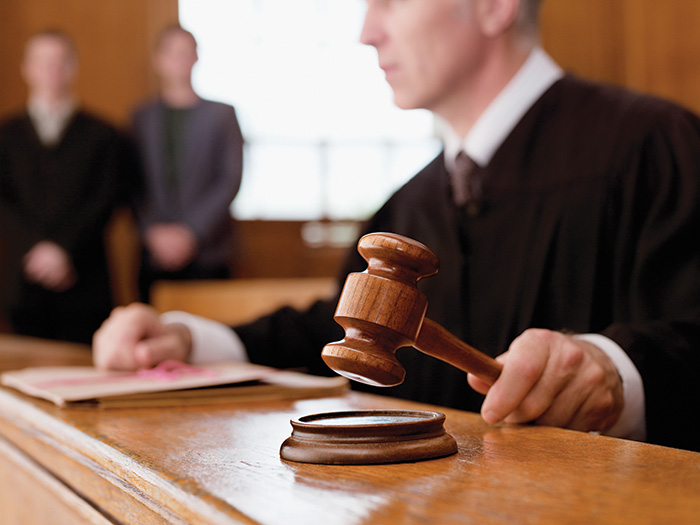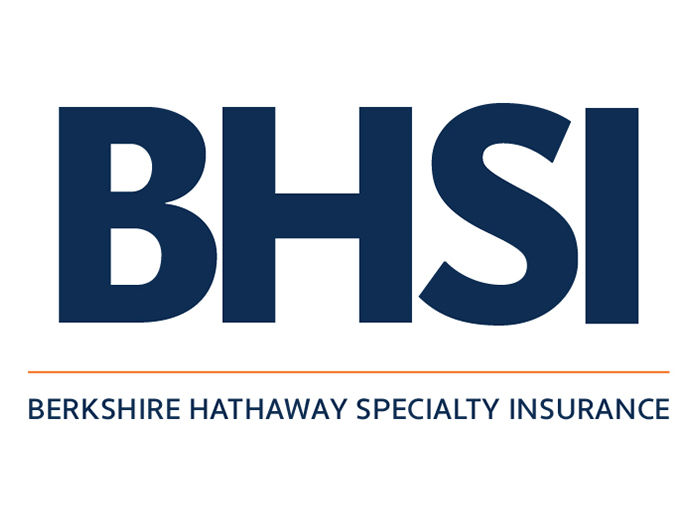COVID in the Courts: Move Over Business Interruption, a Wave of Liability Claims Is Rolling In

Since lockdowns have lifted across the country and capacity restrictions have begun to loosen, shops, restaurants and other businesses have been eager to get patrons through the doors, hoping to make up for months of lost revenue.
But operating at increased capacity also increases exposure to COVID-19 liability claims.
Individuals who get sick from the virus may seek to recoup damages from businesses they frequented around the time they were likely exposed, alleging those businesses were negligent in their duty to provide safe conditions for customers.
In the case of Rumrill v. Princess Cruise Lines Ltd., for example, a couple who contracted the coronavirus claimed they were exposed aboard one of Princess’s ships thanks to the company’s “lackadaisical approach” to safety. A federal judge tossed the case but allowed the plaintiffs to amend their suit. To build a stronger argument, the couple must demonstrate they were likely exposed on the ship given the exact date they began experiencing symptoms and the virus’s incubation period.
Building that link between time of exposure, incubation period and symptom onset would be “a key fact necessary to render the causation allegations plausible, not merely possible,” the judge said, essentially laying the foundation for future plaintiffs’ arguments.
Insurers expect this type of claim to increase in frequency as restrictions continue to loosen and courts open back up.
Claimants will face an uphill battle establishing businesses’ liability for their illness, and most insureds will prevail as long as they can show they followed safety standards set in their state. But they will still have to bear the expense of defense. For businesses already struggling to stay afloat, even meritless claims constitute a significant financial threat.
Insurers can play a key role in helping clients reduce exposure to these claims in the first place and in minimizing the financial impact by proactively building defense strategies.
Controlling Litigation Costs Through Efficient Defense
“We’ll do what we’ve always done to control expenses and protect customers — carefully manage cases,” said Brendan Malley, senior vice president, head of litigation for QBE.

Brendan Malley, senior vice president, head of litigation, QBE
“Our claims department was very proactive on this. The first thing they did was initiate a discussion with our panel of lawyers to engage with them about best practices. What are the theories of liability? What are the theories of defense? What kind of investigations do we need to be doing? What experts or other vendors do we need to retain?”
Testimony from medical experts will be key in supporting insureds’ arguments that pinning down an exact time and location of exposure is nearly impossible, as is the idea that safety precautions can completely eliminate the risk of exposure.
Identifying those experts and preparing them for deposition early could give defense counsel retained by liability insurers a leg up over plaintiffs’ attorneys, increasing the likelihood of an early resolution.
“Our claims team settled on a select group of firms that would be our go-to firms to receive defense assignments from us for COVID cases. And we developed playbooks for how these cases are going to be handled by line of business, always with an eye for early resolution to the benefit of our customers,” Malley said.
Keeping claims out of the courtroom will also be critical to avoid the effects of social inflation. When courtrooms fully open back up, it will be with social distancing, mask-wearing and hand-sanitizing protocols in place. For jurors, there may be an element of fear attached to that environment, which could sway them toward a plaintiff’s point of view.
“Juries will be scared, which plays right into a plaintiff’s hand. They could be difficult cases if they go to a jury,” Malley said.
Despite attempts to close cases early, Vince Morgan, a partner with law firm Bracewell, acknowledged early claims are likely to be the costliest, because “there is no existing roadmap” for defense. Investing in experienced law firms that can secure early wins and help to define that roadmap will pay off over the long run.
“The courts have to make initial rulings, the medical and scientific testimony has to be developed,” Morgan said. “And while hiring experienced counsel might cost more, they are likely to be more efficient and able to achieve better outcomes. Insureds facing these claims also need to actively cooperate with defense counsel.”
Building a Defense Playbook
“Negligence claims typically require proof of a duty, breach of that duty, causation and damages,” said Matt Gomes, a partner in Weinberg, Wheeler, Hudgins, Gunn & Dial’s labor and employment litigation practice.
The two main defenses against COVID liability claims will target causation and breach.
Because transmission of the virus is widespread, “an individual who claims that he or she was exposed to COVID at the workplace or a business might have a difficult time proving causation — that is, that the company’s actions caused the plaintiff’s exposure to the coronavirus,” Gomes said.
And businesses only have an obligation to minimize safety hazards within reason, not completely eliminate them. Even an insured that does everything right cannot guarantee a patron will not be exposed.
“If a business complied with applicable standards, it did not breach its duty to its customers,” Malley said. “So, we could also contest that breach of duty component of the claim.”
“The next pandemic won’t be the same as this one.” — Julia Fuller, SVP, head of account management, Praedicat
Ultimately, the argument in any case will depend on the unique facts, circumstances and laws that apply to it. The function of an insured’s business and any protection afforded it by state immunity laws will both impact the liability picture.
“A hospital and a bicycle shop, for example, will have different liability exposure,” said John Bonnie, who leads the insurance coverage practice group at Weinberg, Wheeler, Hudgins, Gunn & Dial.
“Duty and causation might be easy to establish in the case of the hospital, but it may at the end of the day have legal immunity. The bicycle shop on the other hand may have duty and causation arguments that are an absolute defense to liability,” Bonnie explained.
“The interests of the carrier and the insured in a strong defense are probably aligned in either case, whether the outcome of the defense effort is ultimately a finding of no liability, the development of arguments that reduce recoverable damages where there is liability, or a determination of actual liability and recoverable damages. The defense dollars were well spent either way,” he said.
State Immunity Status
In some states, immunity legislation will render some liability claims null and void.
“The Georgia COVID-19 Pandemic Business Safety Act, or example, provides that no entity or individual may be held liable for a claim for transmission, infection, exposure or potential exposure of COVID-19 unless the plaintiff proves that the actions showed gross negligence, willful and wanton misconduct, reckless infliction of harm, or intentional infliction of harm,” Gomes said.
“Florida and Texas are currently considering bills that would grant broad immunity to businesses for claims of COVID exposure. By contrast, other states have passed laws that limit liability for only for certain specified businesses, such as health care providers or manufacturers and suppliers of personal protective equipment.”
Immunity protection will continue to be in flux as legislators weigh the threat liability lawsuits pose to local businesses versus the role they play in holding those businesses accountable.
“You can imagine approaches that make these claims harder to prove or limit the damages available, as well as approaches that go in the opposite direction. Once other states see what’s working and what isn’t, they may follow suit,” Morgan said.
Risk managers and insurers would do well to know what level of protection is available in their state — if any — and abide by every letter of the criteria required to receive immunity.
“For example, the Georgia law requires the posting of notices containing precise language and even font type and size. Courts strictly construe these laws against immunity, so one misstep may subject the company to liability, no matter how seemingly trivial,” Gomes said.
And don’t bank on any blanket federal immunity law any time soon.
“The federal Safe to Work Act would have provided a level of standardized protection to businesses nationally but was not passed. As a result of the election and change in administrations, it is unlikely that the bill would be passed in its current form. However, Congress may introduce a new version of the bill that contains different provisions,” Gomes added.
Risk Mitigation Best Practices
Of course, the best way to limit exposure to liability claims and ensure an expeditious closure to any that do come forward is to keep premises as safe as possible. Insurers have stressed to clients the need to know state-mandated protocols and document their compliance — or any deviations from it.

Matt Gomes, partner, Weinberg, Wheeler, Hudgins, Gunn & Dial
If, for example, a customer walks into a store without a mask and refuses to don one, there must be a process employees can follow to rectify the situation, and every action should be documented. Where state guidelines don’t exist, follow CDC recommendations instead.
That includes mask mandates for customers and employees, enforcement of physical distancing, provision of hand sanitizing or washing stations, and a deep cleaning protocol that ensures high-touch surfaces are disinfected regularly.
Ideally, that process would be spearheaded by a designated safety professional.
“It’s advisable that our insured has a safety person who is responsible for enforcing standards at the premises and that they will be a good witness. Because [in the event of a claim], that person will be deposed, so we have to make sure they are ready for that. That individual must be able to speak to all the steps the business took to protect employees and customers,” QBE’s Malley said.
There are also best practices to follow when it comes to leveraging insurance protection.
“First, businesses should take all reasonable steps to help ensure the safety of their employees, customers and others who may visit their locations. But second, they need to comply with insurance policies, including things such as providing prompt notice of claims or suits, cooperation, etc.,” said Morgan of Bracewell.
Impacts to Insurers
Liability insurers will be disparately impacted by this anticipated wave of litigation depending on the sectors they cover. Public companies targeted by these claims, for example, could face accompanying SEC lawsuits alleging mismanagement and/or failure to adequately disclose risk.
“The total size of take-home COVID-related liability litigation could reach roughly $19.6 billion, with another $1.4 to $3.8 billion in associated securities lawsuits,” said Stephen Jones, general counsel for Praedicat, a data and technology firm that specializes in identifying emerging risks. These figures, however, are based on extreme disaster scenarios and are contingent on certain assumptions.
Jones said carriers can and should leverage data analytics to gauge the potential impact to their books of business by tracking which industries are hardest hit, as well as the causative actions, defense theories and decisions taking shape to inform proactive formation of specific legal strategies.
Even for insurers whose clients escape these claims, tracking this data will pay off if or when the next pandemic unfolds.
It can, for example, inform a more selective and thoughtful approach to underwriting. Insurers that get stung by these claims might consider slapping communicable disease or virus exclusions on their premises liability policies, if they haven’t done so already.
But if the data shows these claims are largely not affecting their client base, then restricting coverage does little to mitigate exposure and could hurt their competitive position in the marketplace.
That being said, “The next pandemic won’t be the same as this one,” said Julia Fuller, SVP, head of account management with Praedicat.
“We’re pulling in emerging litigation information to continually reassess exposure and take a forward-looking view. Building a better understanding of this risk by tracking emerging litigation will enable underwriters to be selective and thoughtful about how they apply exclusions; how they price risk.”
Only time will tell whether COVID liability claims hold any water in court and how severely they’ll impact businesses’ bottom lines. But no matter how the trend takes shape, insurers are ready to help clients weather the storm. &










